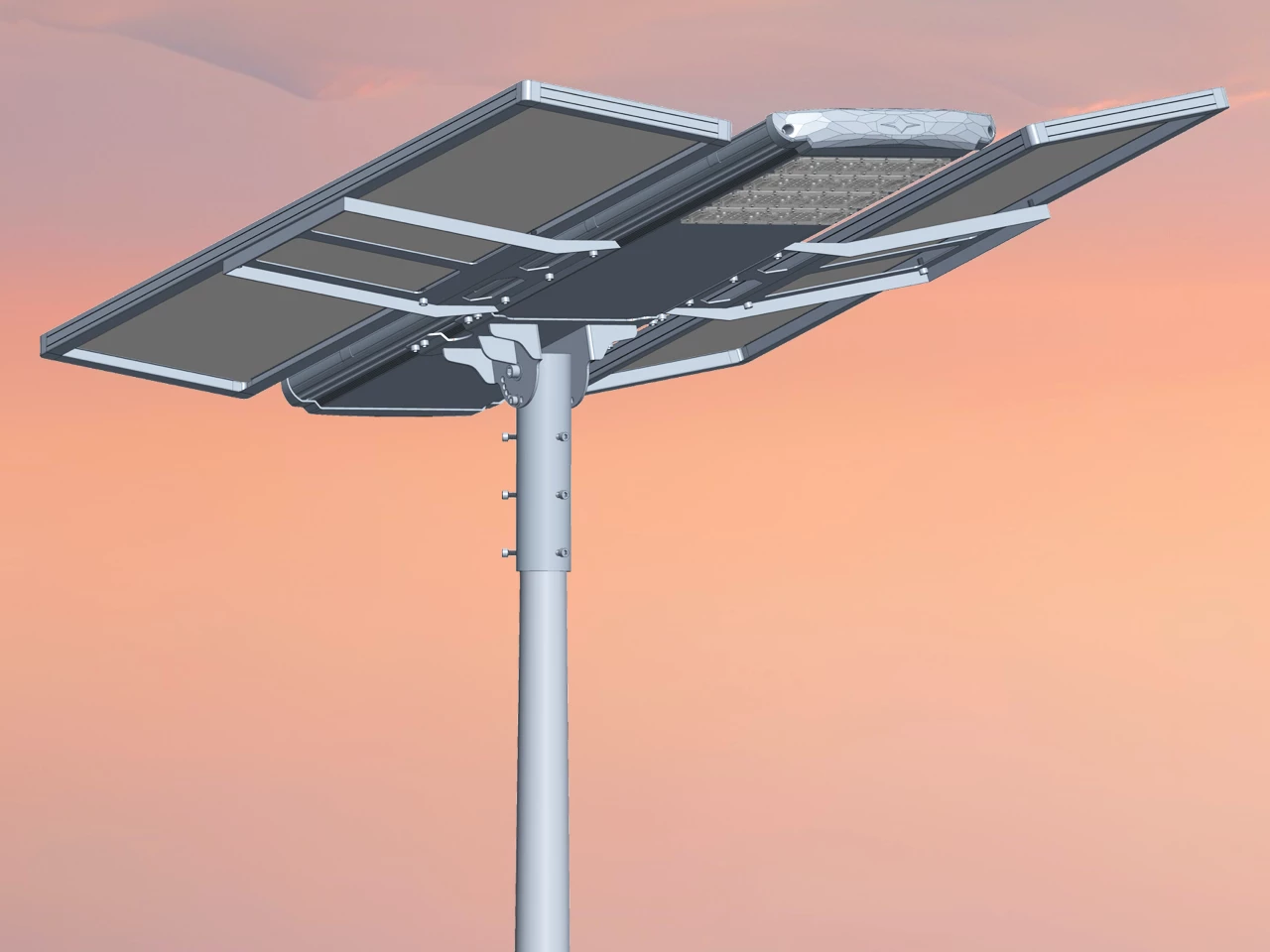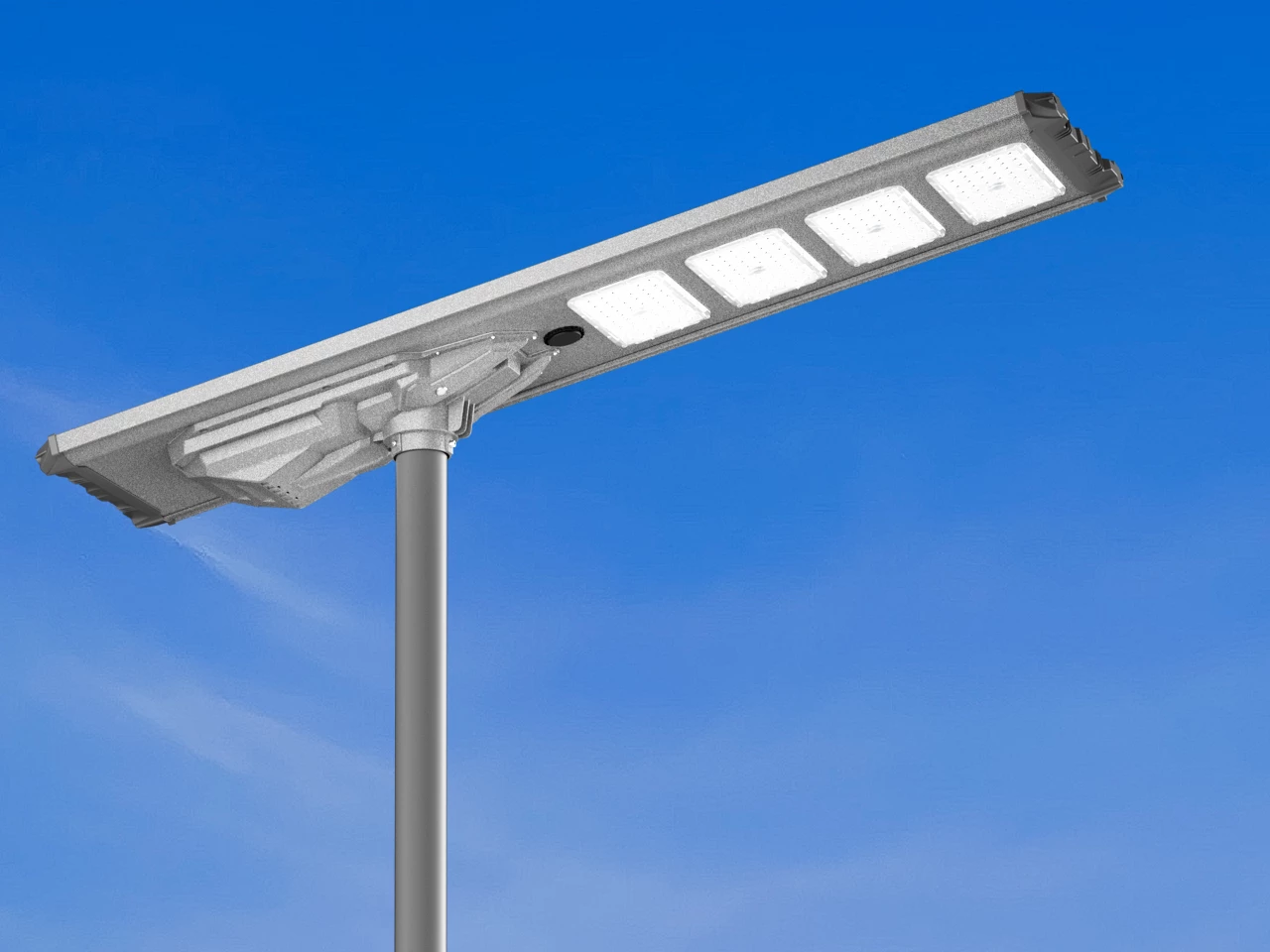What Role Do Batteries Play in Solar Street Light Performance? | Battery Impact Explained
Discover how batteries influence solar street light performance, lifespan, brightness, and reliability. Learn about battery types, capacities, and best practices.
Solar street lights offer sustainable lighting for roads, parks, and communities by using renewable energy. Among all components, the battery is a critical part that directly impacts lighting duration, brightness, and lifespan. This article explores how batteries affect solar street light performance and what factors matter most.

1. Key Functions of Batteries in Solar Street Lights
- Store solar energy collected during the day
- Provide stable power supply to LED lights at night
- Enable smart lighting functions like timers or sensors
- Ensure lighting during cloudy or rainy days (2–5 days autonomy)
2. Common Battery Types for Solar Street Lights
| Battery Type | Advantages | Lifespan | Cost | Application |
|---|---|---|---|---|
| Lithium-ion | High energy density, compact, lightweight | 5–8 years | Moderate | Smart solar street lights |
| LiFePO4 | Thermal stability, safety, long life | 7–10 years | Higher | High-end/engineering projects |
| Lead-acid (Gel/AGM) | Low cost, mature technology | 2–4 years | Low | Budget-friendly systems |
3. How Batteries Affect Performance
- Lighting Duration: High-capacity batteries provide all-night lighting.
- Brightness Stability: Voltage consistency ensures no flickering.
- Energy Backup: Quality batteries offer 2–5 days backup for poor sunlight.
- Maintenance Costs: Long-life batteries reduce replacements and labor.
4. Factors When Choosing a Battery
- Match with LED power and lighting duration
- Adapt to local climate conditions (temperature range)
- Choose smart BMS-enabled battery packs
- LiFePO4 is preferred for reliability and safety
5. Battery Installation & Protection
- Integrated: Built into the lamp body (mainly lithium batteries)
- Ground-mounted: Used for larger lead-acid systems
Protective features include: IP65+ waterproofing, overcharge/discharge protection, thermal resistance.
6. Battery Lifespan & Maintenance
- Lithium: Maintenance-free, lifespan 5–7 years
- Lead-acid: Regular inspection, fluid top-up, terminal cleaning required
7. Queneng Product Advantage
At GuangDong Queneng Lighting Technology Co., Ltd., all our solar street lighting solutions come with high-performance LiFePO4 batteries and smart BMS management. Key features:
- 2500+ deep cycle lifespan
- Stable performance in -20°C ~ +65°C
- IP67 waterproof battery packs
- Custom capacities: 12Ah–120Ah available
-

✅ FAQ – Frequently Asked Questions
Q1: What is the best battery for solar street lights?
A: Lithium Iron Phosphate (LiFePO₄) is widely regarded as the best due to its long lifespan and safety.
Q2: How long do solar street light batteries last?
A: LiFePO₄: 7–10 years; Lithium-ion: 3–7 years; Lead-acid: 2–4 years.
Q3: Can I replace the battery in a solar street light?
A: Yes. Most systems are designed with replaceable batteries. Always match voltage and capacity.
Q4: What causes a solar light battery to fail?
A: Overcharging, deep discharge, water ingress, temperature extremes, and poor-quality cells.
Q5: What size battery is suitable for an 80W solar light?
A: A 12V 40Ah–60Ah LiFePO₄ battery is generally sufficient depending on backup needs.
Q6: Do all solar street lights include batteries?
A: Yes. All complete solar lighting systems include pre-installed batteries.
Q7: How do I maintain the battery?
A: Lithium requires minimal care. Lead-acid needs fluid checks and terminal cleaning.
Q8: Does battery health affect brightness?
A: Absolutely. A weak or degraded battery may cause dim lighting or early shut-off.

Have more questions about our products or services?
The latest hot news you might like

Discover how solar panels power street lights, exploring the technology behind solar energy conversion, storage systems, and how solar-powered street lights are revolutionizing urban and rural lighting solutions.

Learn how AC Solar Hybrid Street Lights work, their advantages, disadvantages, system behavior in low-sunlight conditions, and why hybrid technology is ideal for regions with unstable sunlight.

Municipalities around the world are increasingly adopting solar-powered streetlights as part of their urban development strategies. Rising energy costs, the need for sustainable infrastructure, and government green initiatives are driving cities to switch from traditional street lighting to advanced LED solar streetlights.
Queneng Lighting provides municipalities with cost-effective, energy-efficient, and durable solar lighting solutions, ensuring safe and sustainable public spaces.

In recent years, the purchase of solar streetlights for municipalities has become a growing trend across the globe. Local governments are under pressure to reduce public expenditure, promote green energy, and create safer communities. Solar streetlights provide a reliable, cost-effective, and sustainable solution that meets these needs. Queneng Lighting, as a leading solar street lighting manufacturer, has supported multiple municipal projects worldwide with customized and energy-efficient solutions.
FAQ
Solar Street Light Lufeng
Can Lufeng solar street lights be integrated with other smart systems?
Yes, Lufeng solar street lights can be integrated with smart systems for more advanced functionality. Some models can be connected to remote control units or smart city systems, allowing for real-time monitoring, remote management, and automated control of lighting schedules. This integration enhances efficiency and ease of use.
Battery Performance and Testing
What is the power output of the battery?
The smaller the internal resistance of the battery, the higher the output power. The internal resistance of the battery should be smaller than the internal resistance of the electrical appliance. Otherwise, the power consumed by the battery itself will be greater than the power consumed by the electrical appliance, which is uneconomical and may damage the battery.
Schools and Educational Institutions
How are the solar lights maintained?
Solar lights require minimal maintenance, typically only occasional cleaning of the solar panels and checking the battery and light functions.
Distributors
What kind of marketing and sales support does Queneng provide?
We provide our distributors with a wide range of marketing materials, including brochures, product specs, digital content, and sales guides. Our team also offers training to help you effectively communicate the benefits of our solar lighting solutions.
Battery Types and Applications
How to classify batteries?
Primary batteries: carbon-zinc dry batteries, alkaline- manganese batteries,lithium batteries, activated batteries, zinc-mercury batteries, cadmium-mercury batteries, zinc-air batteries, zinc-silver batteries and solid electrolyte batteries (silver-iodine batteries) etc.
Secondary batteries: lead batteries, Ni-Cd batteries, Ni-MH batteries, Li-ion batteries and sodium-sulfur batteries, etc.
Other batteries: fuel cell batteries, air batteries, thin batteries, light batteries, nano batteries, etc.
Physical battery: Solar cell
Remote Areas Rural Development
What kind of after-sales support do you provide for rural projects?
We offer remote monitoring, regular maintenance schedules, and technical support for all installed systems.

Introducing the Luqing Solar Street Light by Queneng, Efficient LED lighting powered by solar energy is perfect for illuminating outdoor areas. Harness the power of solar energy for sustainable, reliable street lighting. Ideal for eco-friendly, cost-effective outdoor illumination solutions.
If you would like more information about Queneng solar lighting solutions, please send us a message by filling out the form below. Our professional team will get back to you within 24 hours!
Rest assured that your privacy is important to us, and all information provided will be handled with the utmost confidentiality.
Schedule a Meeting

Book a date and time that is convenient for you and conduct the session in advance.
Have more questions about our products or services?



















